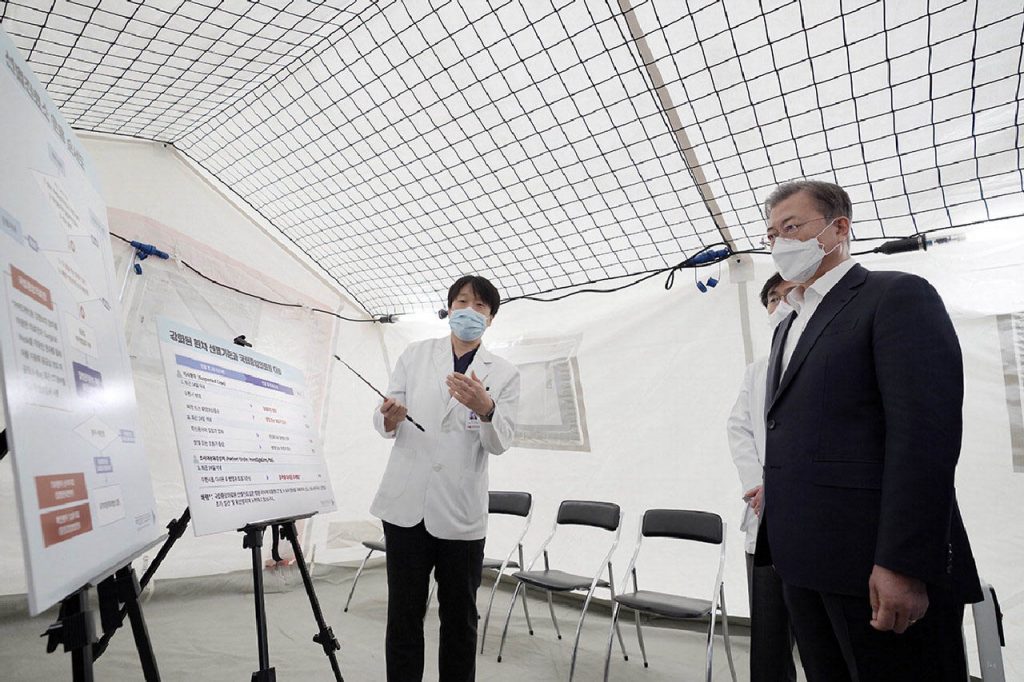South Korea’s new virus cases stayed below 200 for the 13th consecutive day on Tuesday as the country’s tougher social distancing scheme has taken effect, but a rise in untraceable cases and cluster infections are still a drag on the country’s virus fight.
The country added 106 more COVID-19 cases, including 91 local infections, raising the total caseload to 22,391, according to the Korea Disease Control and Prevention Agency (KDCA). It marked a slight drop from 109 cases reported on Monday. The number of additional patients reached 121 on Sunday and 136 on Saturday.
The number of local infections remained in double digits for the third consecutive day, but health authorities are still struggling to regain control over the spread of the virus due to increased cases with unknown transmission routes and sporadic clusters.
Over the past two weeks, 23.5 percent of the additional cases had unidentified infection routes, while 30.9 percent were linked to cluster infections, according to the latest data provided on Monday.
With new infections staying below 200 for nearly two weeks, South Korea decided to ease the strict social distancing scheme in the greater Seoul area, allowing restaurants and cafes to operate normally from Monday.
South Korea had been keeping the daily new virus cases below 100 for months until mid-August, maintaining most of its economic activities compared to other peers around the globe. On Aug. 14, however, the figure abruptly doubled from the previous day to break the threshold of 100.
Cases tied to a conservative church that participated in anti-government rallies in the capital city were largely blamed for the spike, but there were also sporadic cluster infections nationwide. With the number of new cases reaching 441 on Aug. 27, South Korea earlier decided to adopt what it called an enhanced social distancing scheme in greater Seoul through Sunday, under which restaurants could offer only takeout from 9 p.m. to 5 a.m. of the following day.
Franchise cafes and dessert shops were obligated to offer only takeout around the clock. Such restrictions were lifted as of Monday for the capital area that houses around half of the nation’s 51-million population, but the relatively lax Level 2 social distancing scheme is still under force nationwide.
Under the policy, indoor meetings of more than 50 people and open-air gatherings of over 100 people are banned. While operating the three-tier system, South Korea has been cautious about raising the virus curbs to the highest level due to concerns about its far-reaching impact on the economy and people’s livelihoods. Under the highest scheme, all gatherings of more than 10 people are banned.
Of the newly identified local infections, 32 cases were reported in Seoul and 31 in Gyeonggi Province that surrounds the capital. Incheon, west of Seoul, reported eight more cases. Other municipalities reported new infections, with the southeastern port city of Busan adding four cases and South Chungcheong Province reporting three new cases.
Cases traced to Sarang Jeil Church in northern Seoul, a hotbed of the recent spike in new infections, have stayed unchanged for a week at 1,167. But cases tied to the anti-government rally in Seoul on Aug. 15 reached 579 as of the latest data provided on Monday, up two cases from the previous day.
Infections traced to a door-to-door retailer in Bucheon, west of Seoul, reached 16, and those linked to a mountain hiking club also came to 41. The rising number of patients in serious or critical condition, which reached 158 on Tuesday, is also a concern as it may lead to more deaths.
The country, meanwhile, reported 15 imported cases. South Korea reported four more deaths, raising the death toll to 367. The total number of people released from quarantine after making full recoveries stood at 18,878, up 389 from the previous day. (Yonhap)
